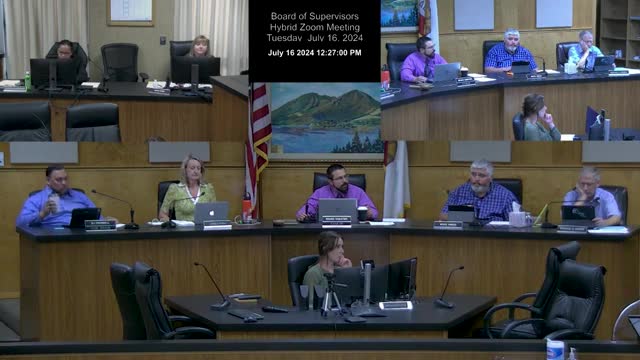Housing Assistance Program Sparks Debate Over Debt Ratios
July 20, 2024 | Lake County, California

This article was created by AI summarizing key points discussed. AI makes mistakes, so for full details and context, please refer to the video of the full meeting. Please report any errors so we can fix them. Report an error »

During a recent government meeting, officials discussed the implications of debt-to-income ratios in relation to a new housing assistance program aimed at supporting low-income residents. Concerns were raised about the program's requirement that qualifying applicants maintain a total debt ratio of 42% to 45% of their income, which includes all debts, not just housing costs. This figure significantly exceeds the commonly recommended threshold of 30% for housing expenses, prompting worries about the financial strain on participants.
One official emphasized the importance of ensuring that potential borrowers carefully evaluate their financial situations before committing to the program. The discussion highlighted the challenges faced by individuals earning below 80% of the area median income, as they may struggle to manage their overall debt obligations while also affording housing.
The meeting also addressed the structure of the proposed forgivable loans, which would be available to participants who remain in their homes for a minimum of five years. If a homeowner sells or rents out their property before this period ends, they would be required to repay a prorated amount of the loan. Officials clarified that the loans are designed to promote long-term stability and wealth generation for low-income families, potentially allowing them to build equity over time.
Despite the concerns regarding the debt ratios, some officials expressed optimism about the program's potential to create generational wealth for residents in Lake County. The meeting concluded with a call for further analysis and consideration of how to best implement the program while addressing the financial realities faced by participants.
One official emphasized the importance of ensuring that potential borrowers carefully evaluate their financial situations before committing to the program. The discussion highlighted the challenges faced by individuals earning below 80% of the area median income, as they may struggle to manage their overall debt obligations while also affording housing.
The meeting also addressed the structure of the proposed forgivable loans, which would be available to participants who remain in their homes for a minimum of five years. If a homeowner sells or rents out their property before this period ends, they would be required to repay a prorated amount of the loan. Officials clarified that the loans are designed to promote long-term stability and wealth generation for low-income families, potentially allowing them to build equity over time.
Despite the concerns regarding the debt ratios, some officials expressed optimism about the program's potential to create generational wealth for residents in Lake County. The meeting concluded with a call for further analysis and consideration of how to best implement the program while addressing the financial realities faced by participants.
View full meeting
This article is based on a recent meeting—watch the full video and explore the complete transcript for deeper insights into the discussion.
View full meeting
